Business
Closing information gaps to strengthen Canada’s border security and track fentanyl
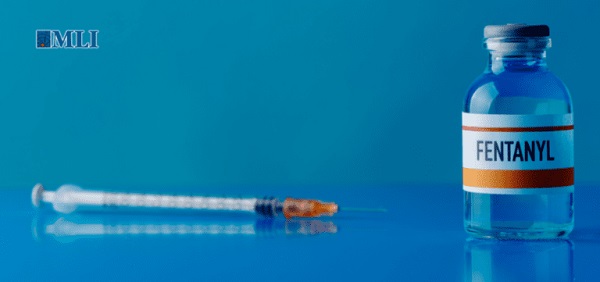
By Sean Parker, Dawn Jutla, and Peter Copeland for Inside Policy
To promote better results, we lay out a collaborative approach
Despite exaggerated claims about how much fentanyl is trafficked across the border from Canada to the United States, the reality is that our detection, search, and seizure capacity is extremely limited.
We’re dealing with a “known unknown”: a risk we’re aware of, but don’t yet have the capacity to understand its extent.
What’s more, it may be that the flow of precursor chemicals—ingredients used in the production of fentanyl—is where much of the concern lies. Until we enhance our tracking, search, and seizure capacity, much will remain speculative.
As border security is further scrutinized, and the extent of fentanyl production and trafficking gets brought into sharper focus, the role of the federal government’s Precursor Chemical Risk Management Unit (PCRMU)—announced recently by Health Canada—will become apparent.
Ottawa recently took action to enhance the capabilities of the PCRMU. It says the new unit will “provide better insights into precursor chemicals, distribution channels, and enhanced monitoring and surveillance to enable timely law enforcement action.” The big question is, how will the PCRMU track the precursor drugs entering into Canada that are used to produce fentanyl?
Key players in the import-export ecosystem do not have the right regulatory framework and responsibilities to track and share information, detect suspect activities, and be incentivized to act on it. That’s one of the reasons why we know so little about how much fentanyl is produced and trafficked.
Without proper collaboration with industry, law enforcement, and financial institutions, these tracking efforts are doomed to fail. To promote better results, we lay out a collaborative approach that distributes responsibilities and retools incentives. These measures would enhance information collection capabilities, incentivize system actors to compliance, and better equip law enforcement and border security services for the safety of Canadians.
Trade-off bottleneck: addressing the costs of enhanced screening
To date, it’s been challenging to increase our ability to detect, search, and seize illegal goods trafficked through ports and border crossings. This is due to trade-offs between heightened manual search and seizure efforts at ports of entry, and the economic impacts of these efforts.
In 2024, the Canada Border Services Agency (CBSA) admitted over 93 million travelers. Meanwhile, 5.3 million trucks transported commercial goods into Canada, around 3.6 million shipments arrived via air cargo, nearly 2 million containers were processed at Canadian ports, roughly 1.9 million rail cars carried goods into the country, and about 145.7 million courier shipments crossed the border. The CBSA employs a risk-based approach to border security, utilizing intelligence, behavioral analysis, and random selection to identify individuals or shipments that may warrant additional scrutiny. This triaging process aims to balance effective enforcement with the facilitation of legitimate travel and trade.
Exact percentages of travelers subjected to secondary inspections are not publicly disclosed, but it’s understood that only a small fraction undergo such scrutiny. We don’t learn about the prevalence of these issues through our border screening measures, but in crime reporting data—after it’s too late to avert.
It’s key to have an approach that minimizes time and personnel resources deployed at points of entry. To be effective without being economically disruptive, policymakers, law enforcement, and border security need to strengthen requirements for information gathering, live tracking, and sharing. Legislative and regulatory change to require additional information of buyers and sellers—along with stringent penalties to enforce non-compliance—is a low-cost, logistically efficient way of distributing responsibility for this complex and multifaceted issue. A key concept explored in this paper is strengthening governance controls (“controls”) over fentanyl supply chains through new processes and data digitization, which could aid the PCRMU in their strategic objectives.
Enhanced supply chain controls are needed
When it comes to detailed supply chain knowledge of fentanyl precursor chemicals moving in and out of Canada, regulator knowledge is limited.
That’s why regulatory reform is the backbone of change. It’s necessary to ensure that strategic objectives are met by all accountable stakeholders to protect the supply chain and identify issues. To rectify the issues, solutions can be taken by the PCRMU to obtain and govern a modern fentanyl traceability system/platform (“platform”) that would provide live transparency to regulators.
A fresh set of supply chain controls, integrated into a platform as shown in Fig. 1, could significantly aid the PCRMU in identifying suspicious activities and prioritizing investigations.

Our described system has two distinctive streams: one which leverages a combination of physical controls such as package tampering and altered documentation against a second stream that looks at payment counterparties. Customs agencies, transporters, receivers, and financial institutions would have a hand in ensuring that controls in the platform are working. The platform includes several embedded controls to enhance supply chain oversight. It uses commercially available Vision AI to assess packaging and blockchain cryptography to verify shipment documentation integrity. Shipment weight and quantity are tracked from source to destination to detect diversion, while a four-eyes verification process ensures independent reconciliation by the seller, customs, and receiver. Additionally, payment details are linked to shipments to uncover suspicious financial activity and support investigations by financial institutions and regulators like FINTRAC and FINCEN.
A modern platform securely distributes responsibility in a way that’s cost effective and efficient so as not to overburden any one actor. It also ensures that companies of all sizes can participate, and protects them from exploitation by criminals and reputational damage.
In addition to these technological enhancements and more robust system controls, better collaboration between the key players in the fentanyl supply chain is needed, along with policy changes to incentivize each key fentanyl supply chain stakeholder to adopt the new controls.
Canadian financial institutions: a chance for further scrutiny
Financial institutions (FIs) are usually the first point of contact when a payment is being made by a purchaser to a supplier for precursor chemicals that could be used in the production of fentanyl. It is crucial that they enhance their screening and security processes.
Chemicals may be purchased by wires or via import letters of credit. The latter is the more likely of the two instruments to be used because this ensures that the terms and conditions in the letter of credit are met with proof of shipment prior to payment being released. Payments via wire require less transparency.
Where a buyer pays for precursor chemicals with a wire, it should result in further scrutiny by the financial institution. Requests for supporting documentation including terms and conditions, along with proof of shipment and receipt, should be provided. Under new regulatory policy, buyers would be required to place such supporting documentation on the shared platform.
The less transparent a payment channel is in relation to the supply chain, the more concerning it should be from a risk point of view. Certain payment channels may be leveraged to further mask illicit activity throughout the supply chain. At the onset of the relationship the seller and buyers would link payment information on the platform (payment channel, recipient name, recipient’s bank, date, and payment amount) to each precursor or fentanyl shipment. The supplier, in turn, should record match payment information (payment channel, supplier name, supplier’s bank, date, and payment amount).
Linking payment to physical shipment would enable data analytics to detect irregularities. An irregularity is flagged when the amounts and/or volume of payments far exceed the value of the received goods or vice versa. The system would be able to understand which fentanyl supply chains tend to use a particular set of FIs. This makes it possible to conduct real-time mapping of companies, their fentanyl and precursor shipments and receipts, and the payment institutions they use. With this bigger picture, FIs and law enforcement could connect the dots faster.
Live traceability reporting
Today, suppliers of fentanyl precursors are subject to the Pre-Export Notification Online (PEN Online) database. This database enables governments to monitor international trade in precursor chemicals by sending and receiving pre-export notifications. The system helps prevent the diversion of chemicals used in the illicit manufacture of drugs by allowing authorities to verify the legitimacy of shipments before they occur.
To further strengthen oversight, the platform utilizes immutability technologies—such as blockchain or secure immutable databases—which can be employed to encrypt all shipping documents and securely share them. This presents an auditable form of chain-of-custody and makes any alterations apparent. Customs and buyers would have the capability to verify the authenticity of the originating documents in a way that doesn’t compromise business confidentiality. With the use of these technologies, law enforcement can narrow down their investigations.
An information gap currently exists as the receivers of the shipments don’t share their receipts information with PEN. To strengthen governance on fentanyl supply chains, regulatory policy and legislative changes are needed. The private sector should be mandated to report received quantities of fentanyl or its precursors, as well as suspicious receiving destinations. This could be accomplished on the platform which would embed the receiving process, a reconciliation process of the transaction, the secure upload and sharing of documents, and would be minimally disruptive to business processes.
Additionally, geo-location technology embedded in mobile devices and/or shipments would provide real-time location-based tracking of custody transactions. These geo-controls would ensure accountability across the fentanyl supply chain, in particular where shipments veer off or stop too long on regular shipping routes. Canadian transporters of fentanyl and its precursor chemicals should play an important role in detecting illicit diversion/activities.
Digital labelling
Licensed fentanyl manufacturers could add new unique digital labels to their shipments to get expedited clearance. For example, immutable digital labelling platforms enable tamper-proof digital labels for legitimate fentanyl shipments. This would give pharmacies, doctors, and regulators transparency into the fentanyl’s:
- Chemical composition and concentrations (determining legitimate vs. adulterated versions of the drug)
- Manufacturing facility ID, batch ID, and regulatory compliance status
- Intended buyer authentication (such as licensed pharmaceutical firms or distributors)
Immutable digital labelling platforms offer secure role-based access control. They can display customized data views according to time of day, language, and location. Digital labels could enable international border agencies and law enforcement to receive usable data, allowing legal shipments through faster while triggering closer shipment examinations for those without of a digital label.
International and domestic transporter controls
Transporters act as intermediaries in the supply chain. Their operations could be monitored through a regulatory policy that mandates their participation in the platform for fentanyl and precursor shipments. The platform would support a mobile app interface for participants on-the-move, as well as a web portal and application programming interfaces (APIs) for large-size supply chain participants. Secure scanning of packaging at multiple checkpoints, combined with real-time tracking, would provide an additional layer of protection against fraud, truckers taking bribes, and unauthorized alterations to shipments and documents.
Regulators and law enforcement participation
Technology-based fentanyl controls for suppliers, buyers, and transporters may be reinforced by international customs and law enforcement collaboration on the platform. Both CBSA and law enforcement could log in and view alerts about suspicious activities issued from the FIs, transporters, or receivers. The reporting would allow government personnel to view a breakdown of fentanyl importers, the number of import permit applications, and the amount of fentanyl and its precursors flowing into the country. Responsible regulatory agencies—such as the CBSA and PCRMU—could leverage the reporting to identify hot spots.
The platform would use machine learning to support CBSA personnel in processing an incoming fentanyl or precursor shipment. Machine learning refers to AI algorithms and systems that improve their knowledge with experience. For example, an AI assistant on the traceability system could use machine learning to predict and communicate which import shipments arriving at the border should be passed. It can base these suggestions on criteria like volume, price, origin of raw materials, and origin of material at import point. It can also leverage data from other sources such as buyers, sellers, and banks to make predictions. As an outcome, the shipment may be recommended to pass, flagged as suspicious, or deemed to require an investigation by CBSA.
It’s necessary to keep up to date on new precursor chemicals as the drug is reformulated. Here, Health Canada can play a role, using its new labs and tests—expected as part of the recently announced Canadian Drug Analysis Centre—to provide chemical analysis of seized fentanyl. This would inform which additional chemical supply chains should be tracked in the PCRMU’s collaborative platform, and all stakeholders would widen their scope of review.
These new tools would complement existing cross-border initiatives, including joint U.S.-Canada and U.S.-Mexico crackdowns on illicit drug labs, as well as sovereign efforts. They have the potential to play a vital role in addressing fentanyl trafficking.
A robust, multi-pronged strategy—integrating existing safeguards with a new PCRMU traceability platform—could significantly disrupt the illegal production and distribution of fentanyl. By tracking critical supply chain events and authenticating shipment data, the platform would equip law enforcement and border agencies in Canada, the U.S., and Mexico with timely, actionable intelligence. The human toll demands urgency: from 2017 to 2022, the U.S. averaged 80,000 opioid-related deaths annually, while Canada saw roughly 5,500 per year from 2016 to 2024. In just the first nine months of 2024, Canadian emergency services responded to 28,813 opioid-related overdoses.
Combating this crisis requires more than enforcement. It demands enforceable transparency. Strengthened governance—powered by advanced traceability technology and coordinated public-private collaboration—is essential. This paper outlines key digital controls that can be implemented by global suppliers, Canadian buyers, transporters, customs, and financial institutions. With federal leadership, Canada can spearhead the adoption of proven, homegrown technologies to secure fentanyl supply chains and save lives.
Sean Parker is a compliance leader with well over a decade of experience in financial crime compliance, and a contributor to the Macdonald-Laurier Institute.
Dawn Jutla is the CEO of Peer Ledger, the maker of a traceability platform that embeds new control processes on supply chains, and a professor at the Sobey School of Business.
Peter Copeland is deputy director of domestic policy at the Macdonald-Laurier Institute.
2025 Federal Election
Trudeau and Carney Have Blown $43B on EVs
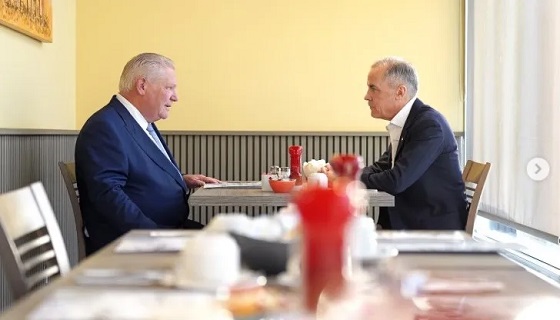
 David Krayden
David Krayden
General Motors laid off 500 workers at his Electric Vehicle (EV) plant in Ingersoll, ON.
It had nothing to do with the tariffs.
It had everything to do with the plummeting fascination that Canadians have for EVs. They are selling like used Edsels in the late 1950s. In a useless attempt to create a demand for these “green” vehicles (which aren’t actually green at all because the production of electricity does not result from magic) the governments of former Prime Minister Justin Trudeau and Ontario Premier Doug Ford wasted $42 billions of your tax money. And it was all to bolster an ideology not a demand for cars. There is no demand for these vehicles.
“You just lost 500 jobs. They’ve nuked those jobs. They’re not there anymore.”
-Dan McTeague

Ford, who saw this coming when he called an early provincial election that he knew he probably was going to lose if he waited for the anticipated vote, was actually honest to reporters when he admitted the layoffs had nothing to do with the dreaded Trump tariff but everything to do with public taste.
“What I understand from the president of General Motors that I spoke to, it’s going to be about 500 employees. Has nothing to do with the tariffs. He said, the volume is not there. People are not purchasing like they thought they would. So, they have thousands of vehicles sitting there. We make sure we support the workers and make sure that we get the government, especially Canada Post, to pick up some of these vehicles, because that’s what it’s geared for you.”

So, Ford expects Canada Post, another government agency on its last legs, to come to the rescue and pick up all these excess EVs? Sounds like it. The irony is that Ford came into office largely because the previous Liberal government had gone hog wild with its green energy program and hydro rates were among the highest in North America. Ford used to say that a industrialized province like Ontario can’t possibly prosper or even subsist on the energy provided by windmills and solar panels. He was right then but over the years he became firmly ensconced in the pocket of Trudeau and the Liberals, just as he is today with Mark Carney.

I spoke to my old friend Dan McTeague on Saturday about this mess. McTeague is a former Liberal MP from the GTA who is the president of Canadians for Affordable Energy today and well known for predicting gas prices across Canada as the @ gaspricewizard on X. As an MP, he always put principal above expediency, and he is no different today. McTeague is anxious for a Conservative Party of Canada (CPC) victory in this federal election and he is actively campaigning for a CPC nominee.

McTeague was not surprised over the dismal outlook for EVs.
“This is about Pierre Poilievre saying your policies are garbage. They’ve hurt Canadians. They’ve undermined the financial feasibility and sustainability of the federal government and the provincial government, and we’re going to get rid of them, just like we’re going to get rid of the CBC.”
-Dan McTeague
“Well, on the 22nd of March after having gone to the Ingersoll plant. I just tweeted a little while ago. I actually went there, filmed what was there in inventory. There were thousands of these vehicles just sitting there doing nothing. Obviously, Doug Ford didn’t get it on the 22nd of March. I said it says a lot about why the Ford nation is giddy about supporting Carney, he’s committed billions in world EV and battery manufacturing like this one in Ingersoll, where the provincial Feds kicked in over half a billion for bright drops. Was supposed to sell 100,000 units. Only sold 2100 actually, it got wrong. It was 2500 they might have probably given that a few away there. But look, this is anticipating what was there. It’s pretty obvious. I mean, I don’t just predict gas prices. Pretty good idea policies, EV mandates, the entire nets,” McTeague said.
McTeague explained that the “EV mandates are toast,” not just because President Donald Trump eliminated them but because they simply never had traction with consumers. He noted that Carney is playing games with the consumer carbon tax – because he hasn’t eliminated it but merely reduced it temporarily to zero – and has continued to keep emissions caps in place.
“Why are they doubling down on forcing us to have California-style appliances, which are extraordinarily costly to consumers. There are thousands of these things that are coming up. GFANZ, the Glasgow Financial Alliance for Net Zero that Mark Carney put forward, is now subject to antitrust review in the United States. This guy could be charged and billions of dollars taken away from the GFANZ organization,” McTeague said, adding that “anybody who hopped on the bandwagon a few years ago on net zero is now looking pretty damn foolish, and it’s amazing to see so many stunned Canadians falling in for this.”
“You just lost 500 jobs. They’ve nuked those jobs. They’re not there anymore.”

The former Liberal MP said the EV program is just one example of a failed economic record from the Trudeau-Carney regime. “However you slice it, the Liberals have had 10 years of failed policies. Net Zero has laid an egg. It’s not doing anything. And what they’re going to try to do is use a lot more public money and hopefully put enough wool over everyone’s eyes, so that we continue to go down this road of more recklessness as a result of what we’ve seen on EVs.
“Anybody who hopped on the bandwagon a few years ago on net zero is now looking pretty damn foolish, and it’s amazing to see so many stunned Canadians falling in for this.”
McTeague also wondered how the Ontario premier has moved from a commonsense politician on green energy to a cheerleader for Trudeau’s environmental authoritarianism. “For Doug Ford to have signed onto this. I mean, Shame on him, but it probably explains why he doesn’t want to support Pierre Poilievre.”
Said McTeague: “This is about Pierre Poilievre saying your policies are garbage. They’ve hurt Canadians. They’ve undermined the financial feasibility and sustainability of the federal government and the provincial government, and we’re going to get rid of them, just like we’re going to get rid of the CBC.”
“And so, for those reasons, you’re going to see why people are not supporting Pierre Poilievre, because they know, you know, they know which side of the bread is going to get buttered and for guys like Doug Ford, Bad mistake, back the wrong horse, and now we’re holding the bag. That’s why he called the election early.”
McTeague said the federal election is a watershed moment for people to decide what kind of future they want: prosperity or poverty. “If Canadians can’t get their head out of the sand and realize that they’re being duped that they can’t afford, you know, the saddling of the debts that these things are incurring for generations to come, and they think that somehow crapping on pipelines or putting emission caps that won’t allow us to make any more oil or gas to send these pipelines that they now suddenly have discovered are important … If we don’t wake up real soon, next two weeks, I can say confidently the next four years is basically cutting people.”
The energy expert predicted that the worst if yet to come if Carney wins a mandate to govern from the voters. “Nothing has changed, if anything, Mr. Carney and his company, as we well know, has lied on so many fronts. And here’s the big one that I’m going to say it here now, because I’ve said it many places before, but to be absolutely clear, you’re going to get a carbon tax, and that 20 cents you think you’re getting off. It’s going to be 40 cents by 2030, likely by the end of another government, “should they form a majority government.”
McTeague cautioned against Canadians becoming deluded and declaring, “Oh, we’re not worried about the future; we just don’t like Donald Trump, and we think Pierre Poilievre is like him.” Give your head a shake — because you know what, I’m going to spend a lot of time over the next few years, pointing back to the stupidity and frivolity of people. And make no mistake, David, these people know what they’re doing. They’re just trying to be cool and friendly because they made mistakes in 2015, 2019 and again in 2021 and they want to somehow think that they can justify bad decisions. What’s coming at the expense of the country? Coming at the expense of our economic sustainability? It’s likely coming at the expense of what concerns me even more so: the future of the federation of this country.”
“I’ve said it many places before, but to be absolutely clear, you’re going to get a carbon tax, and that 20 cents you think you’re getting off. It’s going to be 40 cents by 2030.”
Dan and I also discussed how he has discovered that much of the polling being conducted during this campaign is over-sampling people over 60, which comprise at least 50 percent of the respondents included in the surveys. This bodes well for Poilievre and the Conservatives.
Tomorrow I will be examining how the Consevatives are appealing to working class Canadians, labor union leaders and blue collar workers. Seeking and winning the “hard hat vote” worked for President Richard Nixon in 1972 and President Ronald Reagan in 1984. It can work for Poilevre too in 2025 — and somehow I think he realizes that.
WATCH: The Ugly Truth About Carney: Trudeau Subsidies Fail
CHECK OUT OUR KR NEWS INVESTIGATIVE SERIES ON MARK CARNEY

Rich Banker Man Mark Carney Caught by CBC & CTV Dodging Taxes

Liberal MP Encouraged the Abduction of Conservative Rival for Chinese Bounty

KR NEWSLETTER: Mark Carney to “Fold” “After the vote.” Carney’s Wife’s Eurasia Group Boss Spills the Beans on the Liberals’ “Elbows Up” Master Plan

GFANZ, Mark Carney’s Climate Cabal That Won’t Leave Us Alone

Mark Carney’s is China’s Man

KRN NEWSLETTER: Mark Carney Deep Dive + Disastrous Liberal Leadership Debates
2025 Federal Election
Poilievre will make it harder for politicians to boost their portfolios, close Carney loopholes
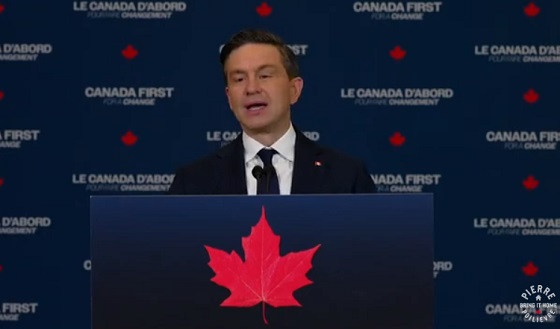
From Conservative Party Communications
Canada can’t afford a fourth term of Liberal waste and scandals, says Poilievre, pledging an end to conflicts of interest, shadow lobbying and politicians using tax loopholes. Our plan will clean house with strong laws that end corruption and waste and put Canadians First—For a Change.
Conservative Leader Pierre Poilievre announced his plan to strengthen the Accountability Act to end the Lost Liberal Decade of corruption and insider dealings in Ottawa. The new rules will close loopholes like the one that Mark Carney used to be appointed as an ‘unpaid advisor’ and set government policy while he lined his own pockets.
“Mark Carney is already the most conflicted Prime Minister in Canadian history,” Pierre Poilievre said. “His conflicts touch everything – from his business interests in nuclear energy to real estate to income tax laws. He has a long record of putting his interests first when he was supposed to be working for you. The last ten years have been about the Liberals, the next decade should be about you–For a Change.”
Poilievre outlined the highlights of his plan:
- Ban shadow lobbyists and close the Carney loophole by requiring anyone advising the government directly or indirectly, who stands to gain financially from their advice, to register as a lobbyist.
- Ban politicians from making decisions that benefit themselves or their families disproportionately, and require Ethics Commissioner approval and full public disclosure of all personal interests.
- Increase fines for ethics violations to $10,000.
- Tax transparency. Require anyone running for public office to disclose where they paid taxes for the last seven years.
- Require cabinet ministers to divest fully from tax havens and disclose assets to the Office of the Conflict of Interest Commissioner, with penalties for non-compliance. No more so-called blind trusts that only blind the public.
- Require party leaders to disclose their assets within 30 days of becoming leader and require Prime Ministers to divest their assets within 30 days of assuming office.
After being appointed as Trudeau’s senior economic advisor, Mark Carney never had to register as a lobbyist, disclose his conflicts of interest or answer to Canadians. He was able to advise the government behind closed doors despite media reports that he had a history of using such advisory positions to benefit Brookfield, the company he chaired, financially.
As an advisor to the UK government, he lobbied for expanded heat pump subsidies that would have benefited a heat pump company that Brookfield owned. The chairman of the company even admitted “Mark is working on our behalf in Government.”
As Prime Minister, Carney benefits from hiding his Brookfield funds in offshore tax havens because the current rules don’t require him to sell them, which is the only way to prevent a conflict of interest. The current rules let him get away with moving his assets into a so-called blind trust, but the only people who are left “blind” are Canadian voters, while Carney knows what is in the trust because he put it there.
“Under the Lost Liberal Decade, political insiders have cashed in while Canadians have lost out,” Pierre Poilievre said. “From insiders lobbying to escape criminal charges to hundreds of millions of your money given to well-connected firms who don’t even do the work they were hired for. It’s unethical, and it needs to be stopped.”
Canadians can’t afford a fourth Liberal term where well-connected insiders and Carney’s personal interests get a pass, while hard-working Canadians get the bill. We need to restore accountability with a new Conservative government that will end corruption and put Canada First – For a Change.
-

 2025 Federal Election1 day ago
2025 Federal Election1 day agoBLOCKBUSTER REPORT: Canada’s ties to Wuhan Institute of Virology and creation of COVID uncovered by Sam Cooper of The Bureau
-
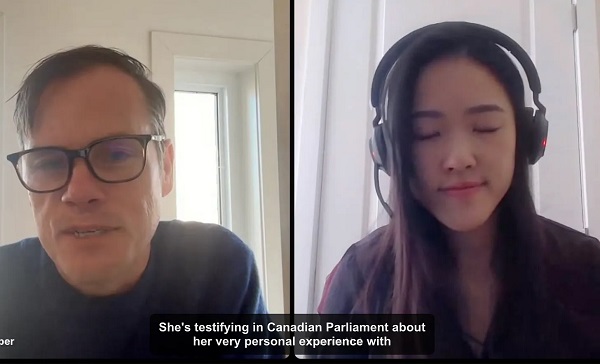
 espionage1 day ago
espionage1 day agoHong Kong Detains Parents of Activist Frances Hui Amid $1M Bounty, Echoing Election Interference Fears in Canada
-

 2025 Federal Election5 hours ago
2025 Federal Election5 hours agoMark Carney Vows Internet Speech Crackdown if Elected
-
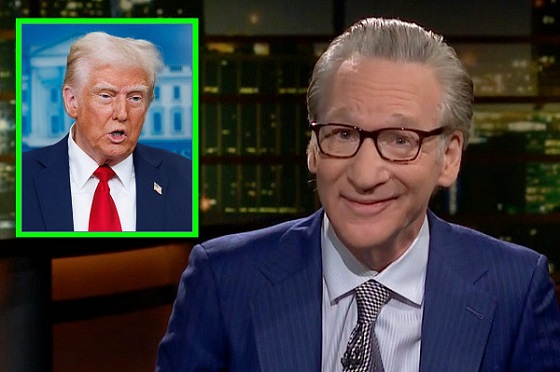
 International2 days ago
International2 days agoBill Maher Breaks His Silence on His Private Meeting With President Trump
-

 Alberta1 day ago
Alberta1 day agoProvince introducing “Patient-Focused Funding Model” to fund acute care in Alberta
-

 Carbon Tax2 days ago
Carbon Tax2 days agoTrump targets Washington’s climate laws in recent executive order
-

 Business1 day ago
Business1 day agoTrumpian chaos—where we are now and what’s coming for Canada
-

 Freedom Convoy18 hours ago
Freedom Convoy18 hours agoA Miscarriage of Justice






